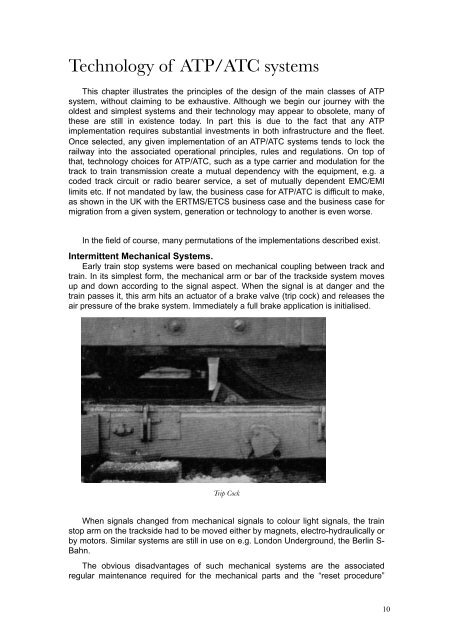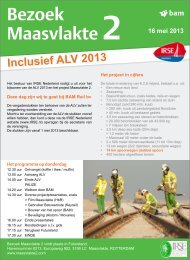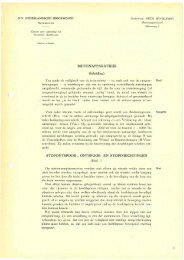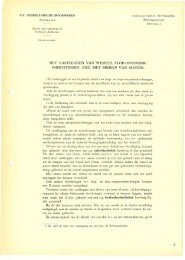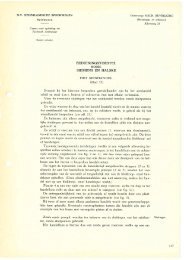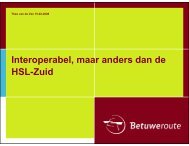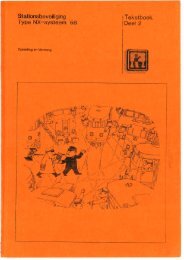intermittent and continuous ATP 101119 - irse.nl
intermittent and continuous ATP 101119 - irse.nl
intermittent and continuous ATP 101119 - irse.nl
- No tags were found...
You also want an ePaper? Increase the reach of your titles
YUMPU automatically turns print PDFs into web optimized ePapers that Google loves.
Technology of <strong>ATP</strong>/ATC systemsThis chapter illustrates the principles of the design of the main classes of <strong>ATP</strong>system, without claiming to be exhaustive. Although we begin our journey with theoldest <strong>and</strong> simplest systems <strong>and</strong> their technology may appear to obsolete, many ofthese are still in existence today. In part this is due to the fact that any <strong>ATP</strong>implementation requires substantial investments in both infrastructure <strong>and</strong> the fleet.Once selected, any given implementation of an <strong>ATP</strong>/ATC systems tends to lock therailway into the associated operational principles, rules <strong>and</strong> regulations. On top ofthat, technology choices for <strong>ATP</strong>/ATC, such as a type carrier <strong>and</strong> modulation for thetrack to train transmission create a mutual dependency with the equipment, e.g. acoded track circuit or radio bearer service, a set of mutually dependent EMC/EMIlimits etc. If not m<strong>and</strong>ated by law, the business case for <strong>ATP</strong>/ATC is difficult to make,as shown in the UK with the ERTMS/ETCS business case <strong>and</strong> the business case formigration from a given system, generation or technology to another is even worse.In the field of course, many permutations of the implementations described exist.Intermittent Mechanical Systems.Early train stop systems were based on mechanical coupling between track <strong>and</strong>train. In its simplest form, the mechanical arm or bar of the trackside system movesup <strong>and</strong> down according to the signal aspect. When the signal is at danger <strong>and</strong> thetrain passes it, this arm hits an actuator of a brake valve (trip cock) <strong>and</strong> releases theair pressure of the brake system. Immediately a full brake application is initialised.Trip CockWhen signals changed from mechanical signals to colour light signals, the trainstop arm on the trackside had to be moved either by magnets, electro-hydraulically orby motors. Similar systems are still in use on e.g. London Underground, the Berlin S-Bahn.The obvious disadvantages of such mechanical systems are the associatedregular maintenance required for the mechanical parts <strong>and</strong> the “reset procedure”10


